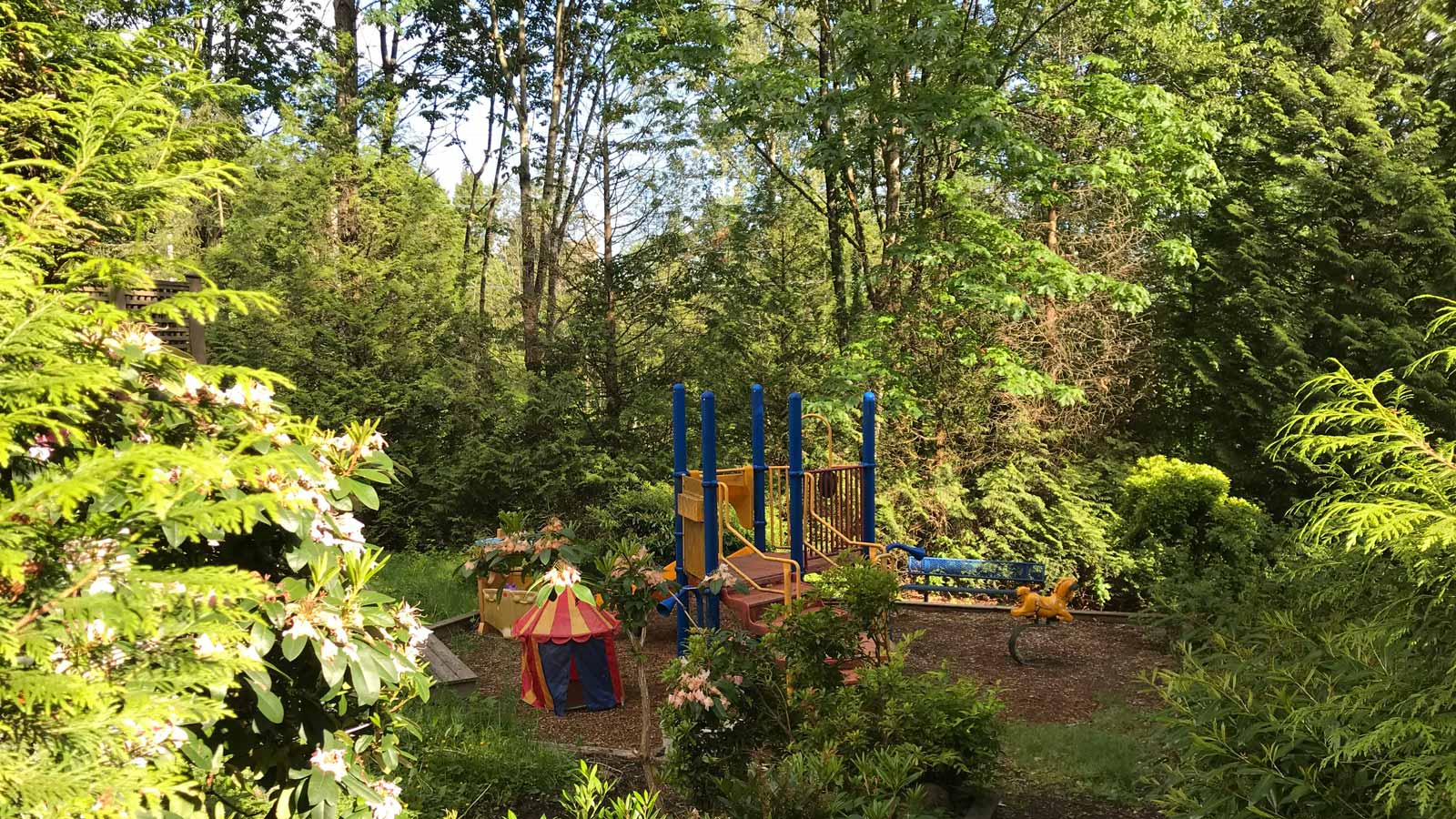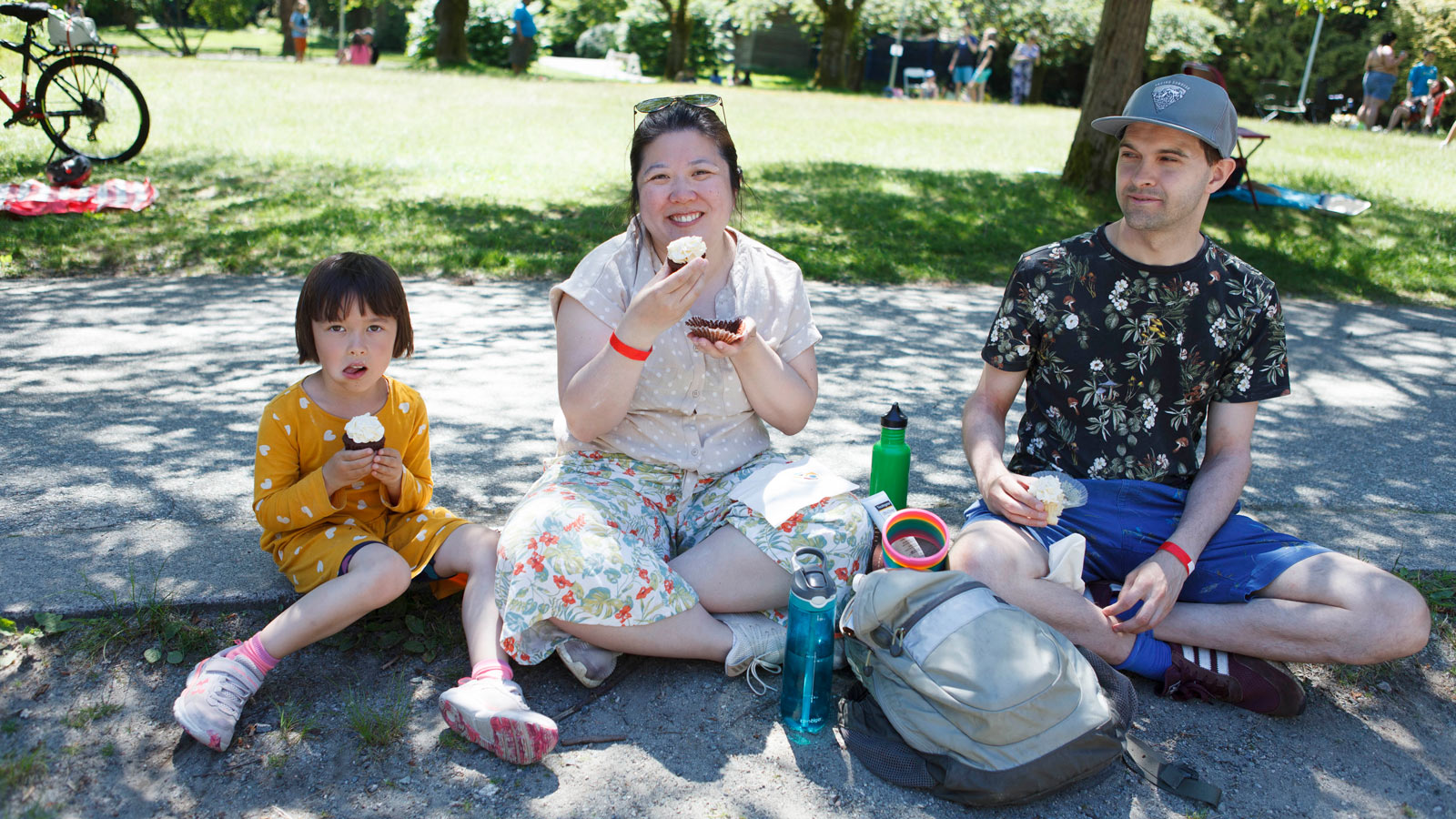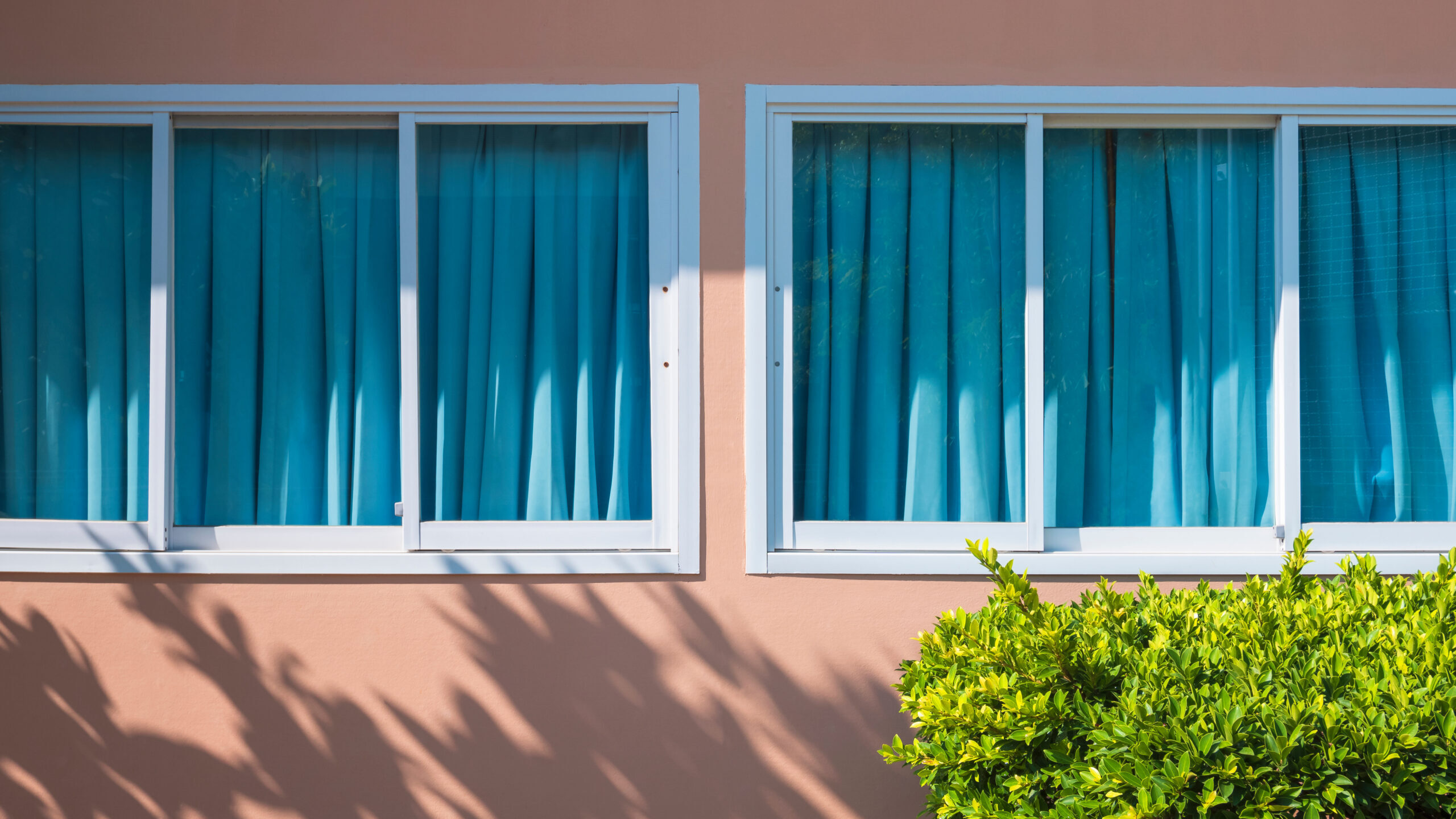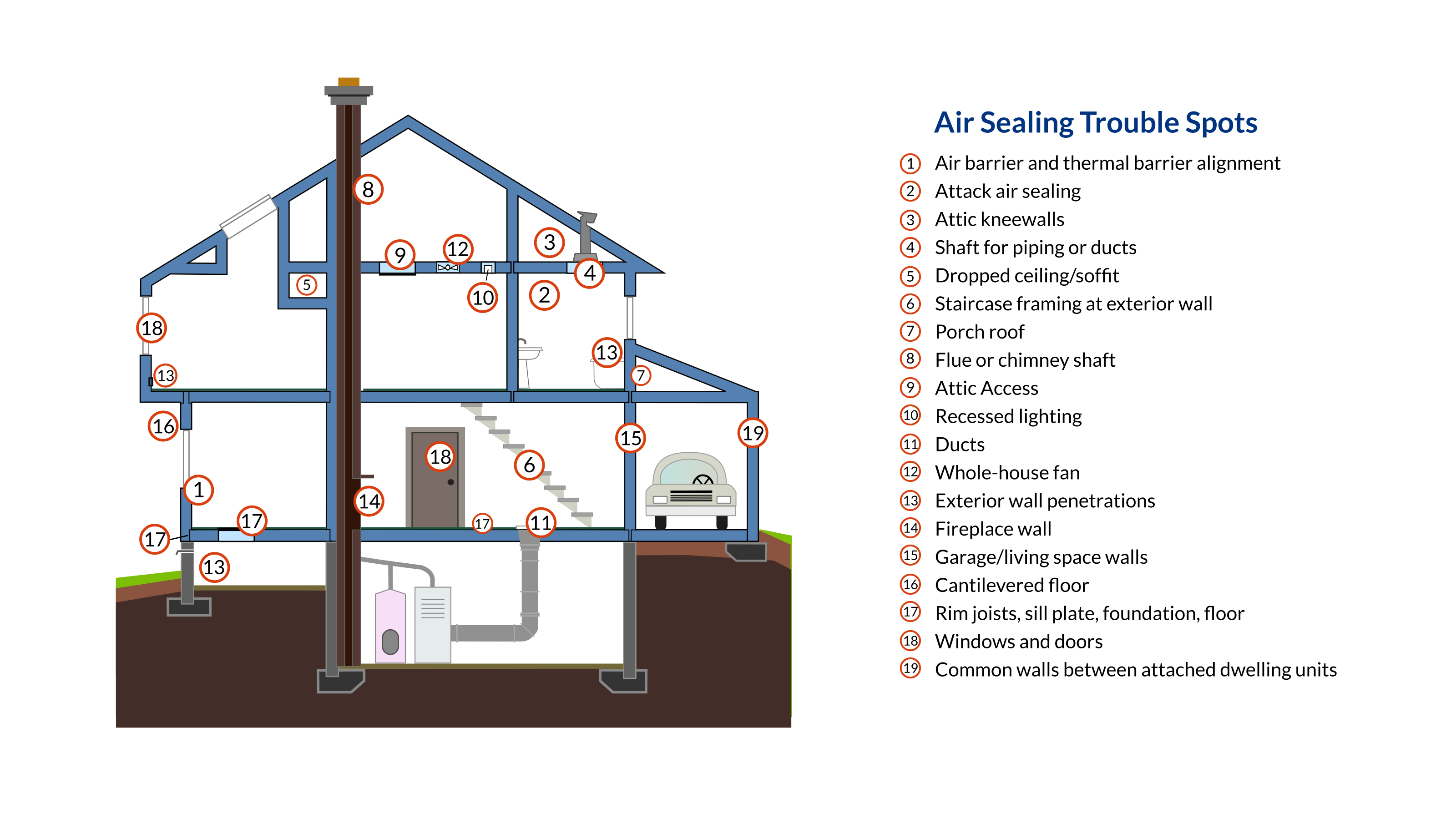HOT WEATHER
ADAPTATIONS
One of the most obvious changes in climate has been an increase in temperature. There are many consequences to this, including rising sea levels and more violent weather that threaten property, but temperature increases themselves can be deadly.
Residential buildings in the temperate, coastal regions of western North America weren’t really designed for hot weather. Relatively few homes have air conditioning and our outdoor spaces have generally assumed cooler, wetter conditions. There’s a wide range of things we can consider doing: some actions just call for small shifts in behaviour while others involve comprehensive retrofits.

Landscaping
Cities experience heat island effects, warmer temperatures than undeveloped land, due to pavement and buildings that absorb light and retain heat.
- Treating hard surfaces
- Green roofs (and blue green roofs) can help reduce temperatures and even reduce energy use, but they may not be so easy to implement due to cost and structural limitations. If you’re planning roof work, however, they might be something to consider.
- There are many ground-level surface options to focus on like asphalt and concrete. In addition to adding to the heat problems, these (usually impermeable) surfaces also worsen run-off, which is more an issue as weather patterns change and precipitation becomes less predictable, but more intense when it falls. Especially as these surfaces naturally come up for renewal, consider other options:
- are hard surfaces necessary at all?
- Could some be eliminated? Would it make sense to invest in, say, porous concrete pavers that let water through, rather than just run off, and which don’t contribute to heating in the same way as other artificial surfaces?
- Can any of your co-op’s hard surfaces be shaded from the sun?
- Trees
- This one gets a separate category. Trees are great! They can provide shading – for people and for many of the hard surfaces that contribute to those heat island effects. Deciduous trees offer advantages in that they provide maximum shade when you need it most, but also let light through during the winter months.
- On the mitigation side, trees can also remove carbon dioxide, the most obvious greenhouse gas, from the air.
- Trees reduce other pollutants as well and also help absorb water (which might otherwise overwhelm storm sewer systems). Some trees produce edible fruit, perhaps reducing, in a small way, the need for food to be transported from other locations.
- Plant choices
- Lawns take a fair amount of water (and work!) to maintain, but vegetation can offer cooling and improve resilience. As water becomes less available or expensive, co-ops might want to consider plants, including groundcovers, that are more tolerant to dry conditions (xerophytes), and which may be less expensive to maintain.
- Careful choices may also improve biodiversity, especially when looking at plants native to your location, and which may reduce the need for artificial fertilizers and pesticides.
- If you grow food or ornamental plants more intensively, you can consider planting drought-resistant varieties and (drip) irrigation systems that most efficiently use water and minimize evaporation. Rain barrels to collect water can also help.
- You may already have knowledge in your co-op that can help answer related questions about plant selection. If not, you might consider hiring some assistance from outside. And on that subject, trees again…
- Consider hiring an arborist to review the status of your existing trees. Are any stressed, or unstable, or needing attention? What other trees might work on your property?

Community
Concern for community is one of the core co-operative principles. Here are some tips to ensure your members—especially the most vulnerable—are comfortable during heatwaves and other particularly stressful periods.
- Provide information to members about resources within and outside the co-op (including things like our sustainability newsletter). Review your emergency plans with a focus on weather-related challenges.
- If co-op members volunteer time for maintenance and other tasks, offer guidelines on when and where to avoid strenuous effort, particularly when exposed to direct sun.
- Create inviting spaces
- Indoors
- Does your co-op have a common area? Might it offer refuge in times of extreme heat?
- Even if other areas of the co-op lack cooling, might the co-op look at offering some cooling in the common room, for instance? (And while investigating options, perhaps check whether your common area is truly accessible to ensure that everyone can benefit from the investments the co-op makes.)
- Have you made provisions for access to these spaces even when meetings aren’t formally planned, in a way that optimizes co-op security?
- Outdoors
- Well-shaded areas – whether from plants or trellises or other structures – can offer relief from the sun. Your co-op may have set aside space for a playground, but all ages can benefit from outside refuges for both physical and mental health.
- Consider a committee that can check-in on members—especially the most vulnerable—during heatwaves and other particularly stressful periods.
- Consider lobbying efforts to extend adaptations across the larger community and the world: encourage your governments to plant trees, add cooling centres for heat in summer (as well as shelters against the cold of winters), support retrofits for adaptations in existing non-profit housing, research new technologies, and promote extending all these kinds of measures to less wealthy parts of the nation and the world.
- Indoors

Controlling Sunlight
Direct sunlight on windows and the exterior of your building can significant increase the temperature of your members' homes. There are several ways to mitigate this sunlight, many are low cost.
- Windows
- Single-paned glass is a terrible insulator; double- and tripled-paned glass is much better. If your buildings still retain older glass, consider replacement even if there’s still life left in the windows. Improved windows will help keep desired heat in and unwanted heat out, especially when combined with appropriate coatings.
- Coated glass (low-e glass) can block more of the non-visible radiation that comes from outside, reducing heating costs and offsetting, over time, the cost of new window installation. Members may even save money as well as reduce overheating, and there may be government programs to help with this kind of capital upgrade.
- Colour
- Choosing colours for your buildings that reflect rather than absorb light can help. Some co-ops with flat roofs use tar-over-gravel or other materials with dark surfaces that get very warm in direct sun.
- “White roofs” can reflect 85% of the light hitting them, helping reduce unwanted heating.
- Exterior Shading:
- Just as trees provide natural shade, buildings can be designed to screen out unwanted sunlight and heat.
- Awnings and other exterior shades for windows, such as shutters or overhanging roofs can be considered, especially if you’re gearing up for major envelope work. (If you’re under warranty for an envelope, be very careful before doing anything that could damage your buildings’ exteriors).
- Some outside shading features can even be connected to automated systems to regulate the amount of shading provided, but even stationary systems can be designed to let more (low-angle) light pass through in winter than in summer.
- Just as trees provide natural shade, buildings can be designed to screen out unwanted sunlight and heat.
- Interior Shading
- Blinds and window coverings can help regulate internal temperatures.
- If your co-op doesn’t provide window treatments that can reflect light back outside, consider adding that component to your co-op’s capital or renewal schedule. Window insulator films are also an option.
- Even if your co-op forgoes policy or capital work in this area, you can still provide members with information about how behaviours—like keeping blinds closed in summer—can help moderate temperatures.

Controlling Heat and Air Quality
Work in this area can involve major reinvestments in your buildings, but if you’re already planning to do work, it makes sense to consider all your available options.
There may be grants available (see Building envelopes, energy efficiency and funding options) to help you navigate your way though the possibilities. You can also talk to staff working with the CHF BC long-term planning team.
- Reviewing heating (and cooling) systems
- In 2022, most non-profit co-op buildings in BC don’t offer cooling, but demand for cooling is likely to increase as the climate continues to warm. New, energy-efficient systems can help with mitigation efforts but can also help with adaptations. Heat pumps are more efficient than electric baseboard heating, but they also offer options to provide cooling.
- Insulation
- Improving insulation helps avoid waste; you waste less money, but you also reduce the waste by-products of the energy generation to heat or cool our living spaces. At the same time, insulation can improve the comfort of residents.
- It can be added to attics, to walls (inside or out) and basements. New exterior insulation will add to the cost of envelope upgrades but is definitely worth considering before making final decisions on the scope of your next envelope project.
- Blocking air leakage
- A lot of energy can be lost due to air leakage. If you’re in the heating season, you don’t want to have to replace warm air leaking out; in the summer, you won’t want cooler air to escape.
- Cracks, holes, and openings into the envelope are all targets. These spots not only transport energy but also let moisture penetrate the envelope and living spaces.
- Although large renovations get the most attention, there are smaller actions that can yield significant results:
- Check weather-stripping around windows, doors, and power outlets.
- Caulk around stationary parts of windows and doors.
- Caulk around power outlets and wiring boxes, plumbing, and ducting on the surfaces in touch with the exteriors of the building.
- Even closing the doors of unused rooms can help save a great deal of energy and let the energy you use make an impact where it concerns you most.
Tip #1: BC Hydro offers suggestions on sealing windows and doors and the ECAP program (see Building envelopes, energy efficiency and funding options) offers direct help to members.
Tip #2: Look for stains on the ceilings, floors, walls, windows, and other openings. Stains can be a sign of moisture presence which could have been transported with the air flow from outside.
Webinar Recording
On July 28, 2022, we hosted a webinar on addressing overheating in co-operative housing.
The webinar—facilitated by Amy Lubik, PhD , a policy analyst at Fraser Health, and Jackie Kloosterboer, a disaster preparedness specialis—looked at:
- The impact of heat waves on people’s health, especially towards vulnerable populations
- Tools co-op communities can implement to combat heat

Additional Resources
We’ve focused on heat-related adaptations, but climate change in BC also affects forest fire risk and air quality concerns. Some of the measures you take to adapt to one consequence of climate change can also improve matters for others. (The same controls that help moderate heat flows can also reduce the introduction of particulates into our living spaces.)
We’ll look at other kinds of adaptations in future updates. In the meantime, here are some additional resources to review.
- Chapter 2 of The Health Costs of Climate Change: How Canada can Adapt, Prepare, and Save Lives (pdf)
- Sign up for The Economist’s climate-change biweekly newsletter
- United States Environmental Protection Agency on Climate Adaptation – Climate Adaptation – Extreme Heat and Health
- Natural Resources Canada – Adapting to Our Changing Climate in Canada (pdf poster)
- Health Canada – Adapting to Extreme Heat Events: Guidelines for Assessing Health Vulnerability (pdf)
- CMHC – Strategies to save water and reduce energy use: Energy and Water Savings Case Studies
- Kamyar Razavi, Global News – Keeping cool: The need to adapt to a new climate reality on Canada’s West Coast, August 9, 2022.
- BCNPHA, Extreme Heat and Wildfire Smoke: Essential Tools for Preparation and Protection webinar recording
- Toward the Heat – Extreme Heat Preparedness PDF
- Vancouver Coastal Health – Creating Cooling Spaces During Hot Weather: Guidance for Community Organizations PDF
- City of Vancouver
- Government of BC
- Be prepared for extreme heat webpage
- Beat the Heat sheet (pdf)
- BC Housing
- Extreme Heat and Wildfire Smoke webpage
- Heat Response Plan worksheet (pdf)
- Fraser Health
- Sun and heat safety webpage
- Caring for, and checking on others webpage
- Extreme heat poster (pdf)
- Fans in extreme heat FAQ (pdf)